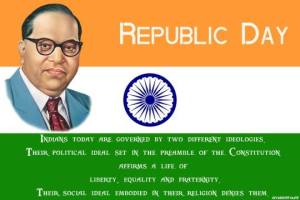Members of the UoH Community,
 My warmest good wishes to all on the occasion of the nation’s 68th Independence Day. Each year we collect to celebrate our independence, and to reaffirm our belief in the democratic values that hold us together as a country, even as we find our regional boundaries changing.
My warmest good wishes to all on the occasion of the nation’s 68th Independence Day. Each year we collect to celebrate our independence, and to reaffirm our belief in the democratic values that hold us together as a country, even as we find our regional boundaries changing.
This is the first Independence Day celebration for the University of Hyderabad as we find ourselves located in the new state of Telangana. The transformation comes with new hopes and fresh challenges, even as we strive to find our feet in the new circumstances. One thing is clear, we are the premier research University of the new state, and we must pay our role to educate and we must fulfill our destiny, to educate, to enable, and to liberate.
The sense of liberation offered by education was beautifully captured by the students of our University at a recent show that they had, at the Salar Jung Museum. The title of the show was (taken from two lines from a poem, The moon is a kite) How strong the Breeze, How precious the Flight.
The University is committed to providing a strong breeze- sometimes as a strong gust that pushes you off your feet, sometimes as a tornado, that churns up your thoughts and makes you re-evaluate your positions, and sometimes as that strong but gentle wind that slowly moulds your ideas and passions into values that will last. The winds of change blow gentle sometimes, but often not, and the University is a place where we willingly enter to experience that change.
 And the flight- how valuable it is when truly earned! The degrees are just one small part of it: the true value of the education that the University provides comes in the opportunities it gives to change ones life. And as so many of our students have discovered, sometimes while they are here, but more often after they have left, the University is a great springboard that can help you to reach as high as you want to. The wings you earn at the University will allow you to soar as high as your ambitions can take you.
And the flight- how valuable it is when truly earned! The degrees are just one small part of it: the true value of the education that the University provides comes in the opportunities it gives to change ones life. And as so many of our students have discovered, sometimes while they are here, but more often after they have left, the University is a great springboard that can help you to reach as high as you want to. The wings you earn at the University will allow you to soar as high as your ambitions can take you.
In terms of resources, the past year has been a difficult one: we have had to bear the full brunt of the economic downturn. Our funding has been way below what we have needed, and indeed below the level that a University such as ours merits. We have been ranked among the top universities in India for the year 2014 in three independent surveys, by India Today, The Week and Careers 360. Ours is among the best Universities in the country and always ranked number one in the South. The NAAC puts us consistently at the top end of their scale. When excellence is recognized, it also needs to be nurtured, so we can only hope that with the change in the scenario at the centre, there will be some relief on this front for us all.
But there are things that we can justifiably be proud of. Our faculty and students have been recognized nationally and internationally for their research. One significant feature of our research over the years is the growth of the applied component – the number of patents that are filed and that are awarded have been increasing steadily.
I think that this is a welcome development, that the work that is done in the University should be more applicable and relevant to our society, to our times. Our University- as we all widely recognize- is a haven, a refuge that provides a wonderful environment in which we can pursue our academic and intellectual activities. We are very fortunate to be able to live and work here, and I believe we all appreciate the deep privilege that we have.
It is important that we should reflect upon how we can give back to the society that nurtures us. For many years now, there has been the notion of a “Corporate Social Responsibility”, recognition that any entity, particularly a corporation that makes profit, has both a social and a moral responsibility to the society in which it exists. We must pay attention to the manner in which we use public resources, else those very resources will be irretrievably lost to us by overuse and misuse. In our country, this social responsibility or CSR has been quantified, and on 1 April this year, the government of India implemented new CSR guidelines requiring companies to spend 2% of their net profit on social development.
What Social Responsibility does a University- our University say- have? We have usually answered this question implicitly, be it by doing what other universities do, by responding to directives that come from time to time from the outside, by admitting students from a wide spectrum of backgrounds, by having policies, explicit or implicit, that address a range of abilities.
Today I would like to suggest that we must take the opportunity to make our University Social Responsibility – our USR if you will- explicit. We must look more closely at the real needs of our society and each segment of our UoH community can do its own bit to address these needs. To start with, let us remember that our campus is in our custodianship, and we must nurture it carefully to provide a lung for the city. Our lakes must add to the water table. Our campus should be a refuge, not just for us, but also for the flora and fauna of Telengana, for the region. We should be careful keepers of the land and not owners or exploiters. This is a responsibility that devolves upon us all- the students, the teachers, and the staff- as we live and breathe here.
Our teachers share the USR in the most fundamental ways- we must live up to our label of being a research University, the best in the country. Our research must strive to be applicable and useful, and there is not an area of enquiry that does not have a chance of being so. Application is not just a matter of patents and products- research that opens our eyes, teaches us new perspectives, gives us new vision, new ideas- all these come from any field, and it is imperative that we make this our responsibility in as explicit a manner as possible.
But beyond that, we must participate in society more meaningfully. Opening our doors to as many students who can be accommodated is one- for every student here, there are almost 20 who could not be here. We therefore must address this need as soon as possible, and as effectively as possible. USR would suggest that we need to evolve at least as much as our society is evolving, in what we teach, how we teach it, and how we prepare our students to cope effectively with the India that is just outside our walls, and the India that lies beyond, both in space and in time.
 Interacting with the city and beyond the limits of Hyderabad is important, especially in this day when local and global are so interchangeable and mixed into one another. Holding our conferences in the city- as the IAMCR that we concluded last month, the Dynamics Days conference that we held in Chennai, or the Women’s World Congress that we will have next week- is one way. Integrating into the fabric of our city, state or country in as involved a way as possible is another feature of what I see as our USR, and doubtless there are other ways that will occur to each one of us.
Interacting with the city and beyond the limits of Hyderabad is important, especially in this day when local and global are so interchangeable and mixed into one another. Holding our conferences in the city- as the IAMCR that we concluded last month, the Dynamics Days conference that we held in Chennai, or the Women’s World Congress that we will have next week- is one way. Integrating into the fabric of our city, state or country in as involved a way as possible is another feature of what I see as our USR, and doubtless there are other ways that will occur to each one of us.
There is nothing very new in this. We have long used our truly national days- 26 January and 15 August- to reflect upon our journey as a nation, and to set agendas for the future. The social responsibility that I am alluding to today has always been a part of our consciousness, especially when we realize how fortunate we all feel to live in a free country, and in a society which, while imperfect, has sound democratic values. For long our gaze has been an inward one, which looks at our rights and privileges. We need also to turn it outward, and look at our responsibilities as a University, as we help to create the India of the future, the India that we all dream of: an India of prosperity, an India of progress, and an India of equality.
Jai Hind!
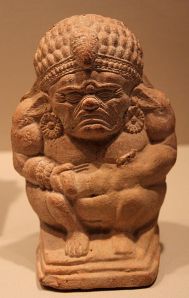
 I have valued my time at the University and am grateful for the great opportunities that it has provided me. In particular, for the chance to take the road less traveled by. The UoH has completed forty years in 2014, so one is also reasonably secure that ours is a robust system, one that has weathered many storms and one that is strong in its foundations. I am therefore confident that work that is started today will be continued if it is truly in the best interests of the University, and that the best traditions of the University will be upheld.
I have valued my time at the University and am grateful for the great opportunities that it has provided me. In particular, for the chance to take the road less traveled by. The UoH has completed forty years in 2014, so one is also reasonably secure that ours is a robust system, one that has weathered many storms and one that is strong in its foundations. I am therefore confident that work that is started today will be continued if it is truly in the best interests of the University, and that the best traditions of the University will be upheld.






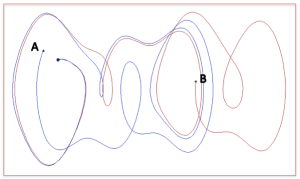

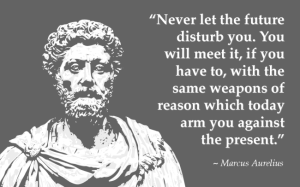





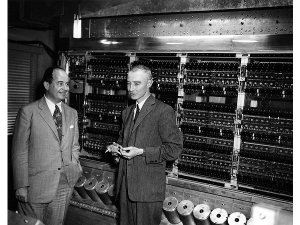


 Interacting with the city and beyond the limits of Hyderabad is important, especially in this day when local and global are so interchangeable and mixed into one another. Holding our conferences in the city- as the IAMCR that we concluded last month, the Dynamics Days conference that we held in Chennai, or the Women’s World Congress that we will have next week- is one way. Integrating into the fabric of our city, state or country in as involved a way as possible is another feature of what I see as our USR, and doubtless there are other ways that will occur to each one of us.
Interacting with the city and beyond the limits of Hyderabad is important, especially in this day when local and global are so interchangeable and mixed into one another. Holding our conferences in the city- as the IAMCR that we concluded last month, the Dynamics Days conference that we held in Chennai, or the Women’s World Congress that we will have next week- is one way. Integrating into the fabric of our city, state or country in as involved a way as possible is another feature of what I see as our USR, and doubtless there are other ways that will occur to each one of us. Most of the
Most of the 

